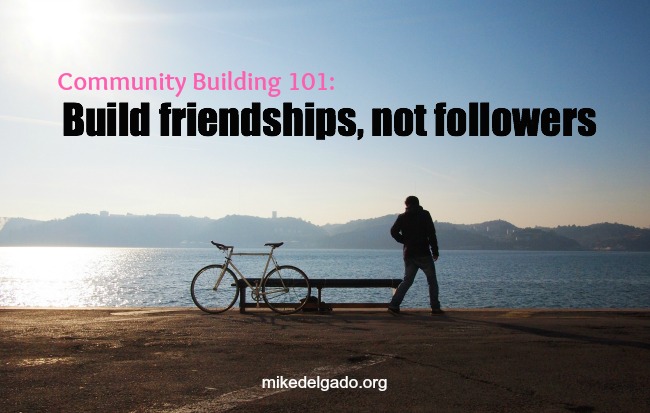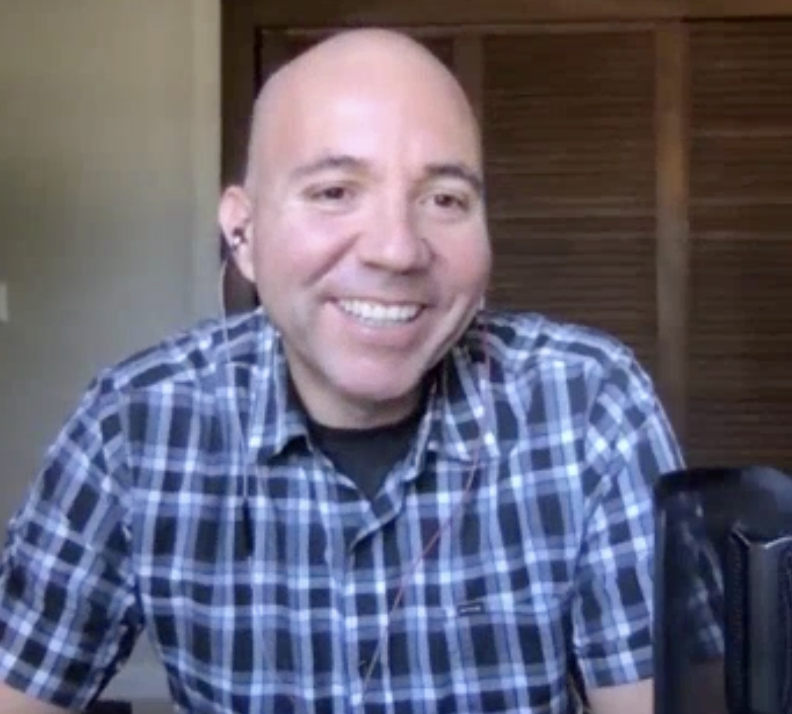
I just got back from hanging out with friends and colleagues at the FinCon conference in New Orleans this past week.
Aside from the informative and entertaining sessions, FinCon is an opportunity to actually shake hands, hug, and hang out with those I’ve engaged with online.
FinCon is a place where you can move an online relationship into an offline friendship. And that’s the glue that keeps this personal finance community growing – and why we all keep going back every year.
This year, I had the honor to moderate a community building session with chief community builders: J.D. Roth, Jim Wang, Luke Landes, and Jeff Rose. These are four entrepreneurs who understand how to build thriving communities, and our session was a deep-dive into their thoughts and approach to attracting a community.
I loved listening to them talk about community building because their process is authentic and built on earning trust over time through consistent killer content, regular engagement with fans, testing new media, inspiring movements, etc.
Their fascinating discussion made me think more about my community building work – and my approach to social media managment.
My approach to building community is through earning real friendships, not trying to gain random followers. Anyone can buy followers (via advertising), but earning a real community of people takes time. You need to earn their trust – and be available to engage. This requires you to be intentional about the relationships you wish to grow – and this means setting aside time to do this.
Here are four ways to help you earn friendships in your community building efforts:
1. Build friendships by using an ear horn – and listening to what matters to your community.
Community builders need to show they care – and that starts by listening to those in your community.
What topics do they talk about? What are their pain points? What are their challenges? What are their needs? What type of content could be helpful to them? What content do they share? What organizations, journalists, or bloggers do they admire?
As you listen, you will learn about the types of content and media you ought to be focused on creating. You’ll learn about problems in your industry? You’ll learn about topics and questions you never would have thought about. Aside from that, listening is always the first step in building any type of relationship. You need to take the time to listen and ask questions.
You ought to know your community members so well that you can identify trends and potential issues before they arise. By listening to your community, you can solve problems before they happen and prepare for a potential crisis faster.
Don’t just listen to those with loud voices (e.g. large followings, top influencer scores, etc.), care enough to listen to the small voices in your community, too. Most people in your community will have smaller voices – and all of their concerns and interests combined will speak volumes on what matters.
2. Build friendships by giving community members capes – and making them your heroes.
To grow a thriving community, you need to make community members the heroes. It’s not about you – it’s about them. Your community is a lot smarter than you, so pay attention to their insights and feature them more than yourself.
It bothers me when I see companies using social channels to strictly spout their own insights. The self-promotional social strategy doesn’t spark community – it stunts it.
It’s easy to fall into this trap of only sharing your own content when you have a company producing a lot of content. It’s also easy to fall into this trap when you’re trying to show senior leadership a regular increase in positive social mentions and traffic back to your site. Self-promotional posts are okay, but shouldn’t be the bulk of your social stream.
Practically, I’d like to see more than 80% of a company’s social posts promoting fascinating insights from others – and less than 20% of content promoting your company. Not only will this tactic probably earn you more shares, but recognition from the people you are promoting. This strategy serves the writer you are promoting and the best interest of the community. So, check your ego at the door, and promote others above yourself.
3. Build friendships by engaging with your community to show you care.
Aside from simply listening, you need to be engaging in conversation. This is a time-consuming aspect of community management, but vital to keep your community strong. Set goals for yourself on how often you will engage in conversation with your online family. Whatever day or time you choose, you need to be intentional about engagement.
Engagement with your community online is a strong way to show empathy and care for them. They are the reason why you even have an online presence. If you can’t spend time engaging with your community then hire someone to assist you with responding to questions and engaging in discussions. If your company has a customer service team, take the time to train them on how they can help you.
I host weekly video chats and tweet chats to help me engage with a lot of my online family at one time. In just one hour a week, I can interact with everyone who attends these live events. And through these events, I’m learning about new members and connecting with those who attend regularly. This one hour also provides me with tons of insightful content that I can share after the event.
4. Build friendships by giving your community quality content they will care about.
You can’t grow your online family without serving them with media that will help them. It’s great to listen, engage, and spend time with your community. But, you also need to be consistent in supplying them with useful information to help them.
The more of a resource you become – the more likely they will want to listen to what you have to say. This also means you need to test out what type of media your community will prefer consuming.
Do they appreciate videos? Would they prefer listening to you in a podcast? Are they visual people who like infographics and images to learn concepts? Do they like reading blog posts? Test out different approaches to see what type of content resonates with your community – and never stop testing or being satisfied with your results.
Remember, you’re not the only company producing helpful content. You need to stand out by consistently sharing killer content in innovative ways to grab attention and earn their trust and friendship.
I wish there was an easy way to grow an online community, but there isn’t it It takes time – so put in the time if you really care about your work and earning friendships in your community.
Recommended Reading:
The Art & Science of Writing Questions to Engage Your Community
How to Get More Engagement and Visibility on Your Company LinkedIn Page
The Science of Getting Retweeted: 5 Stats That Might Shock You
So how are your building friendships and serving your community? Let me know in the comments. I’d love to hear from you.

